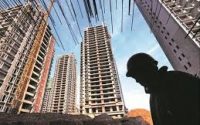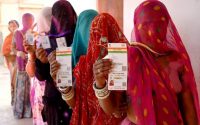$100 Website Offer
Get your personal website + domain for just $100.
Limited Time Offer!
Claim Your Website NowMuslim parties retract statement regarding ‘Ram Chabutara’ in Ayodhya case
Source:- orissapost.com
New Delhi: Muslim parties retracted their statement Wednesday in the Supreme Court that ‘Ram Chabutara’, in the outer courtyard of the disputed site in Ayodhya is the birthplace of Lord Ram and attacked the Archaeological Survey of India (ASI) report which had suggested that the structure pre-existed the Babri Masjid.
The Muslim parties told the top court there was no change in their stand of there being no evidence to suggest that the 2.77 acre of the disputed land was the birthplace of Lord Ram.
They further said that in their submission Tuesday they had only meant that Muslim parties did not challenge the Faizabad district judge’s order of May 18, 1886.
However, the apex court said if there was any objection to the ASI report, the contesting parties would have raised it before the High Court as there was legal remedy available under the law.
“Whatever, may have been your objections, however, strong it may have been, it cannot be entertained by us,” said a five-judge Constitution Bench headed by Chief Justice Ranjan Gogoi while referring to the provisions of the Civil Procedure Code, which empowers parties to the title suit to make objections to the court commissioner’s report.
The bench, also comprising Justices SA Bobde, DY Chandrachud, Ashok Bhushan and SAbdul Nazeer, was told at the outset by senior advocate Zafaryab Jilani, appearing for the Sunni Waqf Board, ‘there is no change in our stand and our stand remains the same that there are no evidences to suggest that the disputed site particularly the ‘Ram Chabutra’ was the birthplace of Lord Ram’.
“Our stance is that it is their (Hindu parties) belief and the Muslim parties have not challenged the order of May 18, 1886, which had observed that Hindus believes that ‘Ram Chabutra’ as the birthplace of Lord Ram,” Jiani added.
Jilani had Tuesday conceded that the belief that Ayodhya was the birth place of Lord Ram is correct.
Justice Chandrachud questioned Jilani and said that the report of British Archeologist Patrick Carnegie and two other documents suggest that both Hindus and Muslim used to worship at the Mosque till 1857, when a iron railing was erected to separate them after the riots.
“It is clear from these documents that they (Hindus and Muslim) used to worship together inside the mosque and after an incident of 1857, a iron railing was made to separate them and then a ‘Ram Chabutra’ was put up for Hindus to offer prayer. These three documents make the entire picture clear,” Justice Chandrachud said.
The senior advocate did not agree with the suggestion of the bench and said that these are all oral evidences. He asserted that the court had to examine it in totality before accepting them.
Taking from Jilani the arguments for the Muslim parties, senior advocate Meenakshi Arora, made an attempt to trash the report of the ASI, prepared on the orders of the Allahabad High Court by saying that the report has errors and contradictions and can at most be treated as an opinion of experts.



